Im trying to implement a simple first order IIR filter on a MCU (PIC24FJ32GA002), without success until now. The filter is a DC tracking filter (low pass filter) whose purpose is to track DC component of a 1.5Hz signal. The difference equation was taken from a TI application note:
y(n)=Kx(n)+y(n-1)(1-K)
with K = 1/2^8
I made a MATLAB script to test it and it works well in the simulation. Code used:
K=1/2^8
b = K
a = [1 -(1-K)]
Fs=200; // sampling frequency
Ts=1/Fs;
Nx=5000; // number of samples
nT=Ts*(0:Nx-1);
fin=1.5; // signal frequency
randn('state',sum(100*clock));
noise=randn(1,Nx);
noise=noise-mean(noise);
xin=200+9*(cos(2*pi*fin*nT));
xin=xin+noise;
out = filter(b,a,xin);


However I can't implement it on a PIC24F microcontroller. i'm representing the coefficients in Q15 (1.15) format, storing them in short variables and using a long one for multiplications. Here it is the code:
short xn;
short y;
short b0 = 128, a1 = 32640; // Q15
long aux1, aux2;
// (...)
while(1){
xn = readADC(adc_ch);
aux1 = ((long)b0*xn) << 1;
aux2 = ((long)a1*y) << 1;
y = ((aux1 + aux2) >> 16);
delay_ms(5);
}
Long cast is used to extend the signal so the multiplying operation is done correctly. After each multiplication I shift left one bit to remove the extended signal bit. When summing I shift right 16 bits to get y in Q15 format.
Im debugging the MCU with Pickit2 and "View->Watch" window (MPLAB IDE 8.53) and testing the filter with a DC signal (I change the DC signal with a potenciometer to test different values). The ADC has 10bit resolution and the MCU is supplied with 3.3V. Some results:
1V --> xn = 312 (correct), yn = 226 (incorrect)
1.5V --> xn = 470 (correct), yn = 228 (completely wrong)
What am I doing wrong? Any suggestions on how to implement this IIR filter on a 16bit MCU?
Many thanks in advance :)